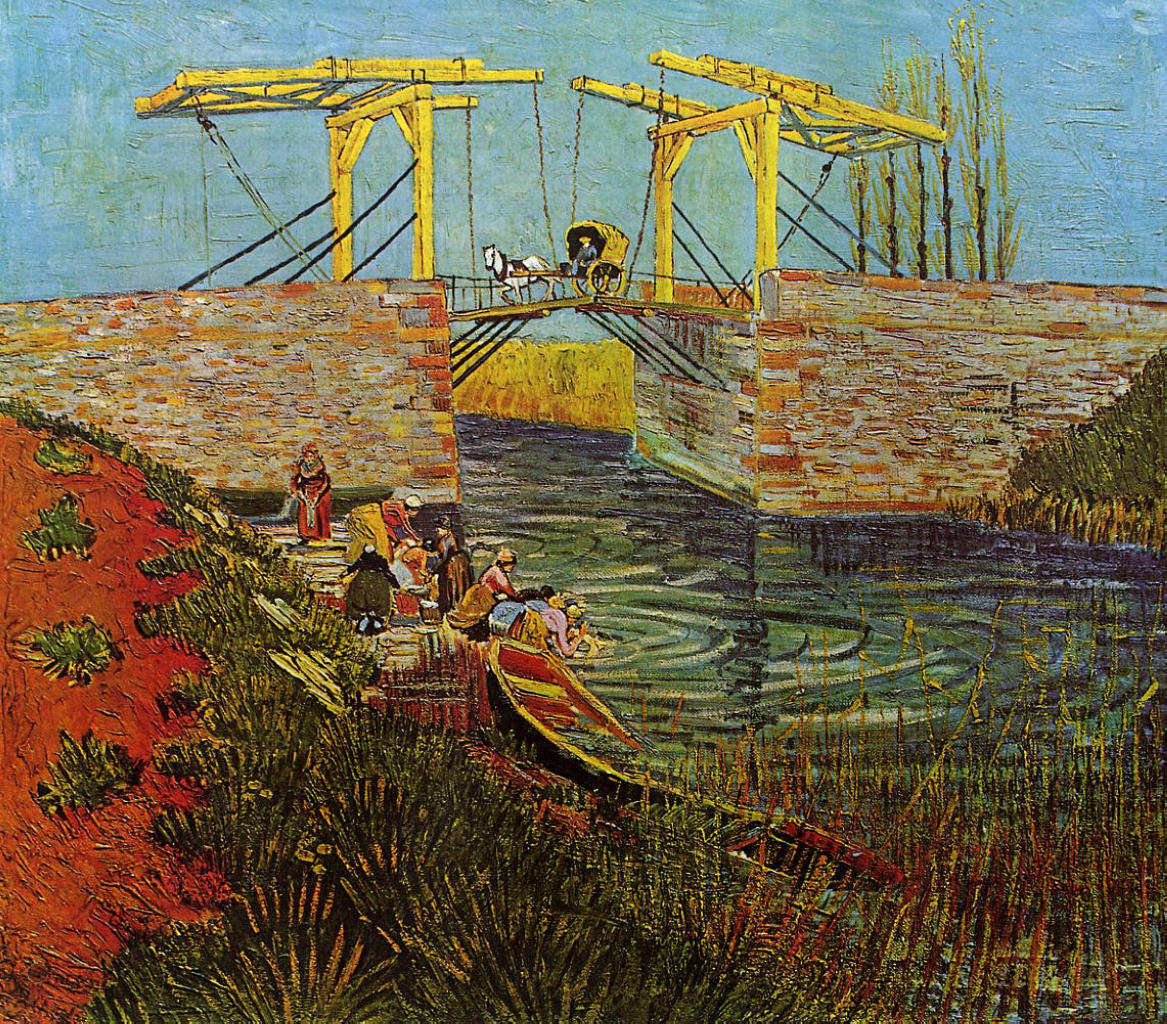
The Langlois Bridge at Arles Vincent van Gogh encyclopedia of visual arts
Il ponte di Langlois è una serie di dipinti del pittore olandese Vincent van Gogh, realizzati nel 1888 e conservati presso il Rijksmuseum Kröller-Müller di Otterlo (F 397), il Museo Wallraf-Richartz di Colonia (F 570) e il Museo Van-Gogh di Amsterdam (F 400). Una quarta versione (F 571) a olio e un acquerello (F 1480) sono conservati presso collezioni private.

The Langlois Bridge at Arles, 1888 by Vincent van Gogh Art Van, Van Gogh Art, Claude
Un'opera d'arte in 3 minuti: una serie di videoclip realizzate da Javier Spinella, insegnante del Collegio Arcivescovile di Trento - sede di Rovereto, nel co.
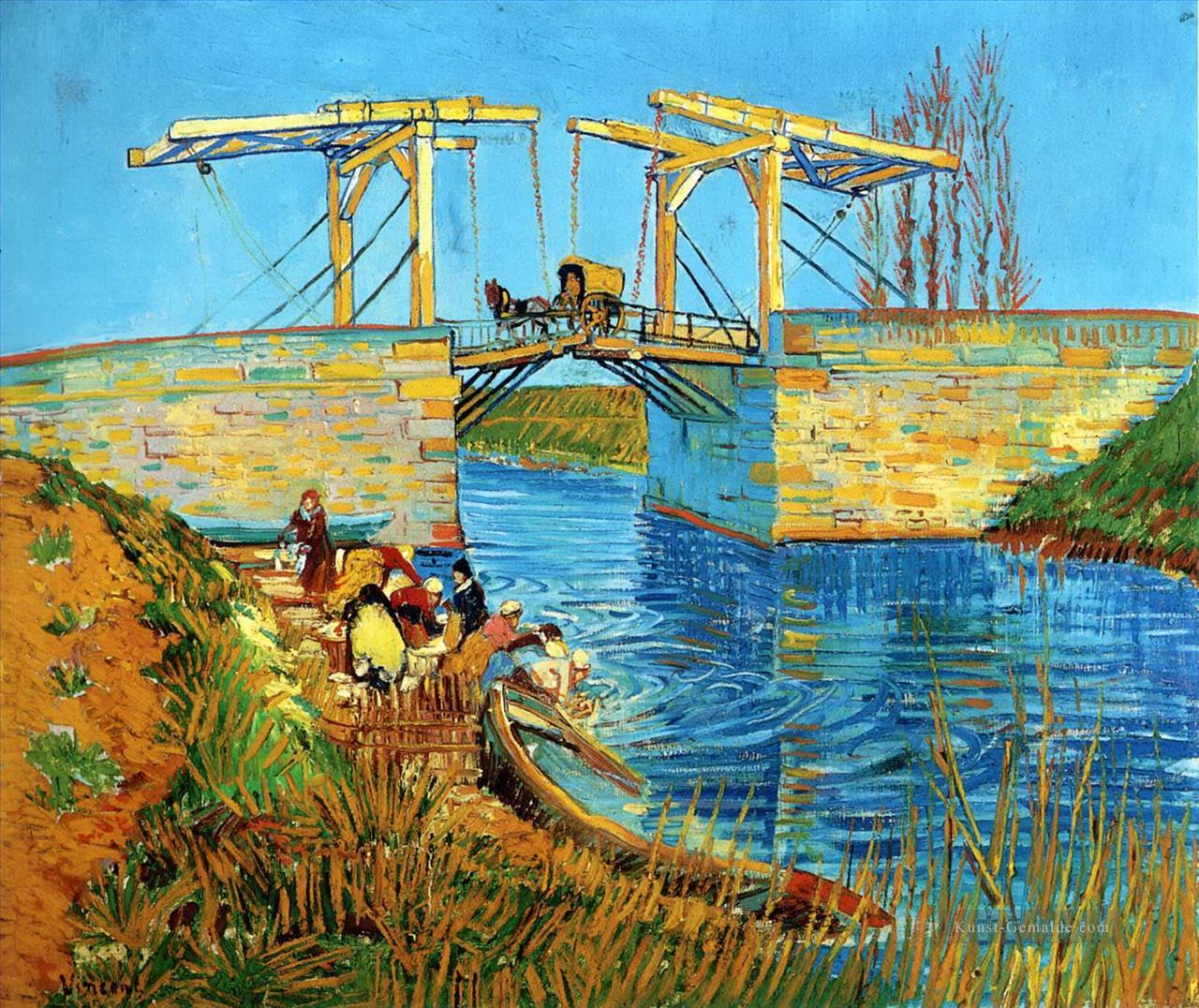
Die Brücke von Langlois bei Arles mit dem Frauen Waschen 2 Vincent van Gogh Gemälde mit öl zu
Vincent Van Gogh, Il ponte di Langlois, marzo 1888. Olio su tela, 54 x 65 cm. Otterlo, Kroller-Muller Museum. La forza del colore. Van Gogh prese il vero a pretesto per parlare di sé stesso e del suo mondo interiore tormentato; il colore divenne simbolo delle sue passioni, così come il tratto contorto e dinamico delle sue pennellate dense e.

The Langlois Bridge at Arles 1888 Van gogh exhibition, Van gogh, Vincent van gogh
Nel 1888, Vincent Van Gogh si trasferì ad Arles, un comune provenzale di cui il pittore si innamorò e che, da subito, lo indusse a realizzare dipinti importanti. Fra questi "Il Ponte di Langlois", un olio su tela realizzato nel marzo del 1888 e che, attualmente, è esposto nel Rijksmuseum Kroller-Muller a Otterlo, in Olanda. Il ponte di Langlois (Pont de Langlois, Van Gogh, 1888)

ROMPEDAS PONT VAN GOGH
Al ponte pedonale di Langlois, così chiamato in onore dell'anziano custode che ne assicurava il funzionamento, Vincent Van Gogh dedica una serie, di cui ama in particolare la versione del 1888, oggi al Museo di Colonia. L'artista osserva la scena dalla sponda sinistra del fiume, dove una lavandaia risciacqua la biancheria.

Van Gogh's The Langlois Bridge by AnnaSulikowska on DeviantArt
https://cultura.biografieonline.it/ponte-langlois-van-gogh/

Il ponte di Langlois 1888 Colonia, Museo WallrafRichartz Paul Gauguin, Paul Signac, Vincent
Dynamic composition. Fairly soon after arriving in Arles, Van Gogh paints different versions of the drawbridge just south of the town: four paintings, two drawings, a watercolour and a sketch. This painting has a dynamic composition. The canal forms a diagonal that carries the total image. This leads the eye toward the bridge and the covered.

VAN GOGH, IL PONTE DI LANGLOIS CIO' CHE NESSUNO HA CAPITO IN QUESTO DIPINTO Blog di Alberto
The Langlois Bridge at Arles is the subject of four oil paintings, one watercolor and four drawings by Vincent van Gogh.The works, made in 1888 when van Gogh lived in Arles, in southern France, represent a melding of formal and creative aspects.Van Gogh used a perspective frame that he built and used in The Hague to create precise lines and angles when portraying perspective.
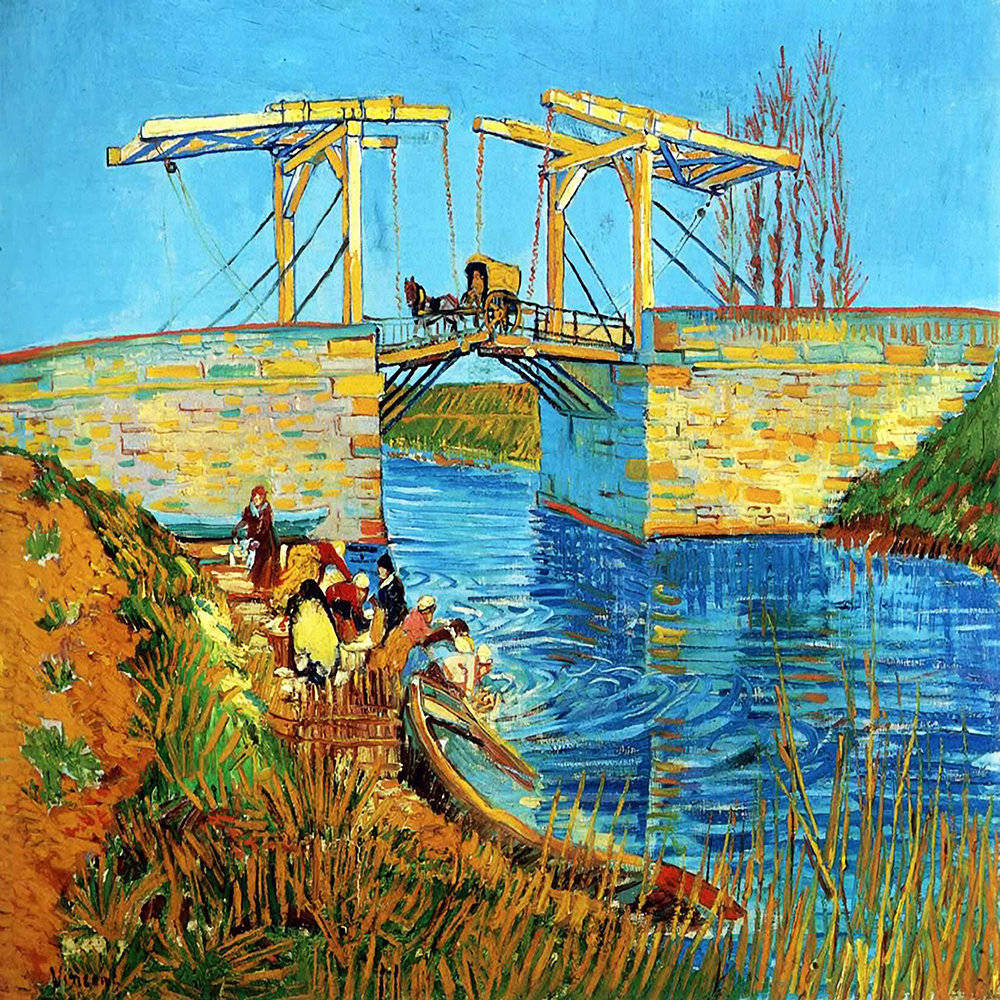
Il ponte di Langlois Stampa su tela 90x90 Van Gogh Legendarte Acquista su Ventis.
Vincent van Gogh March 1888 - 1888. The bridge at Langlois, near Arles, exerted an extraordinary attraction on Vincent van Gogh. He painted it several times. In this work, he employs the conspicuous diagonal and contours which he had seen in his beloved Japanese prints. Look at the road in the foreground, for example.
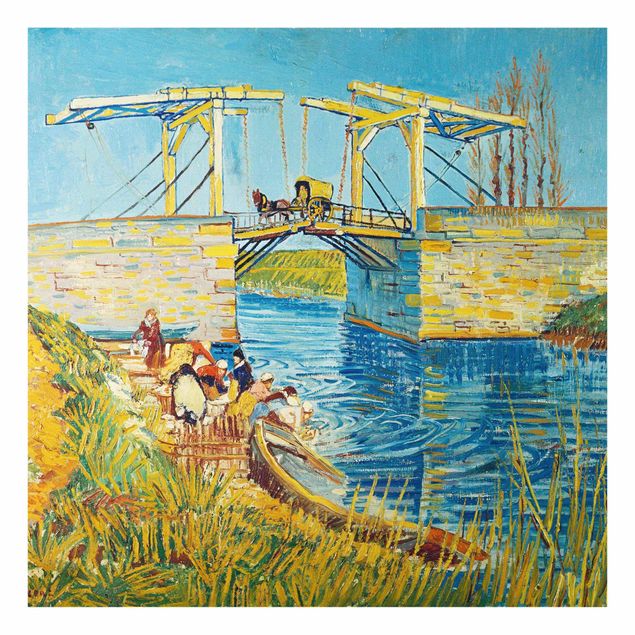
Quadro in vetro Vincent van Gogh Il Ponte di Langlois ad Arles con Lavandaie Post
Executed in April 1888, Le pont de Langlois à Arles is one of a series of views of the Langlois Bridge at Arles that van Gogh painted between mid-March and mid-May of 1888. These pictures are among the most celebrated and recognizable paintings from his sojourn in the South-- the fifteen months that van Gogh spent at Arles represent the pivotal moment in his career, in which he integrated the.

A Chuva e o Bom Tempo Vincent van Gogh, quadro "Ponte de Langlois, em Arles"
Fairly soon after arriving in Arles, Van Gogh paints different versions of the drawbridge just south of the town: four paintings, two drawings, a watercolour and a sketch. This painting has a dynamic composition. The canal forms a diagonal that carries the total image. This leads the eye toward the bridge and the covered wagon that crosses it.
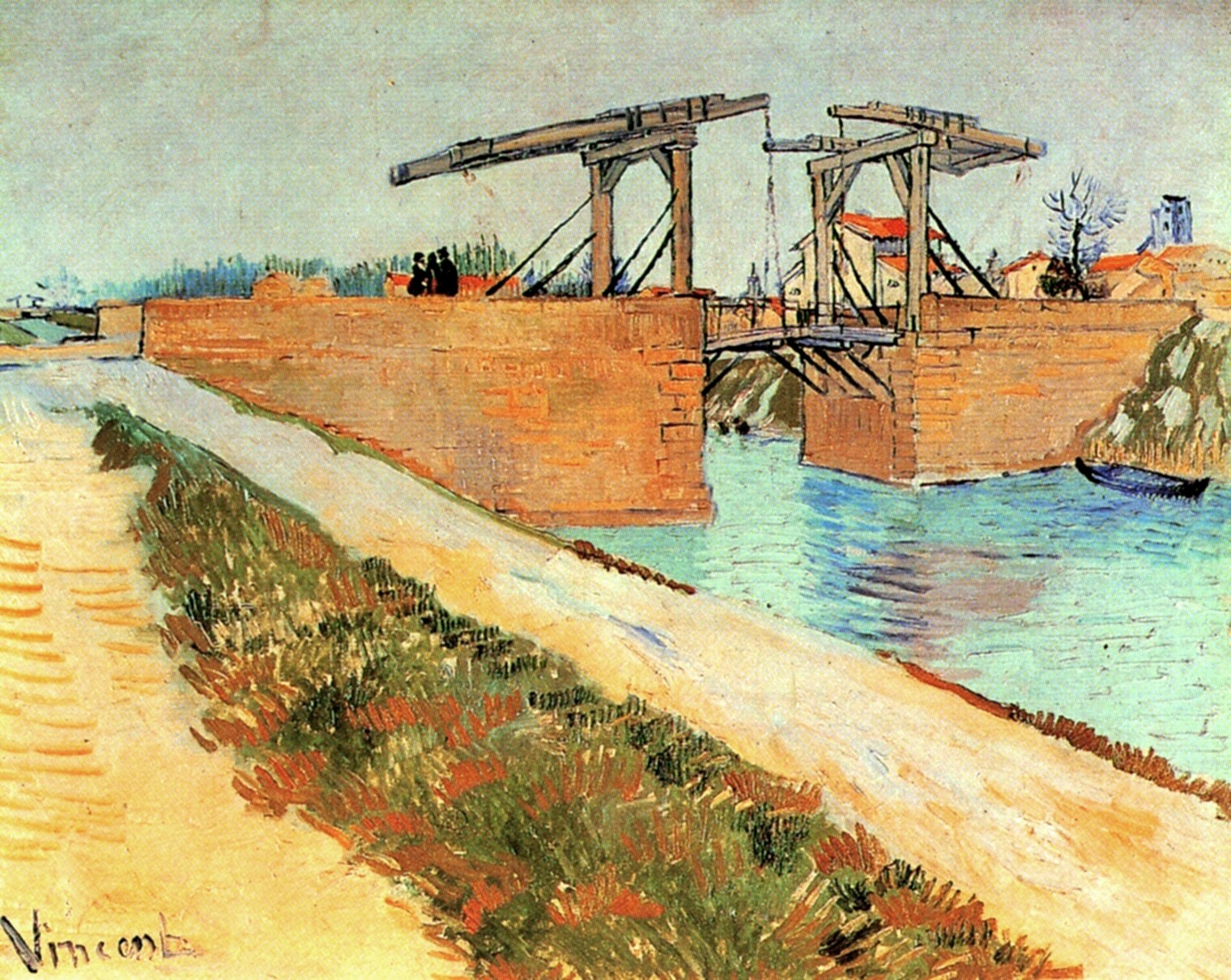
The Langlois Bridge at Arles with Road Alongside the Canal, 1888 Vincent van Gogh
The Langlois Bridge Currently on view Vincent van Gogh (1853 - 1890), Arles, March 1888 oil on canvas, 59.6 cm x 73.6 cm. Sent by the artist from Arles to his brother Theo van Gogh, Paris, at the beginning of May 1888; after his death on 25 January 1891, inherited by his widow, Jo van Gogh-Bonger, and their son, Vincent Willem van Gogh.
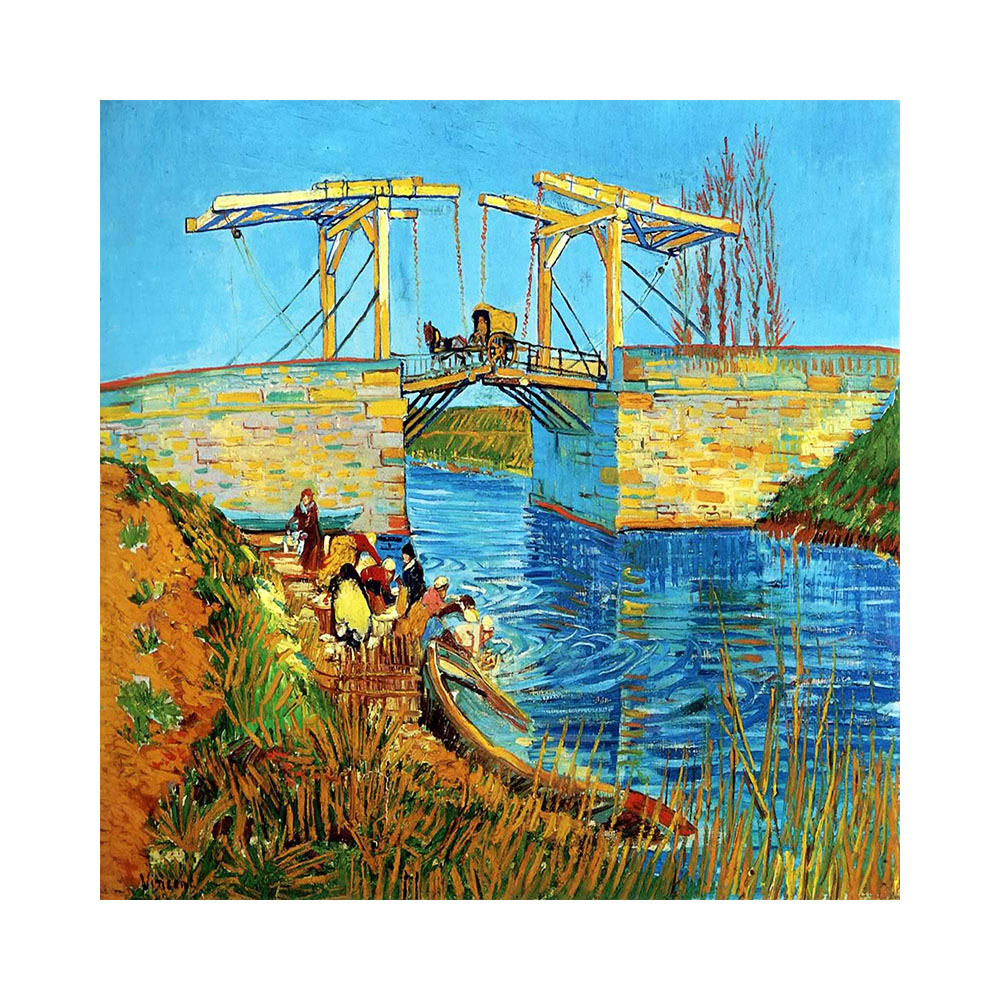
Stampa su tela Vincent Van Gogh Il ponte di Langlois L'arte del regalo
Title: The Langlois Bridge. Artist: Vincent van Gogh (Dutch, Zundert 1853-1890 Auvers-sur-Oise) Date: July 1888. Medium: Reed pen and logwood ink over graphite on wove paper. Dimensions: 9 5/8 × 12 5/8 in. (24.5 × 31.9 cm) Classification: Drawings. Credit Line: Los Angeles County Museum of Art, George Gard De Sylva Collection. Accession.
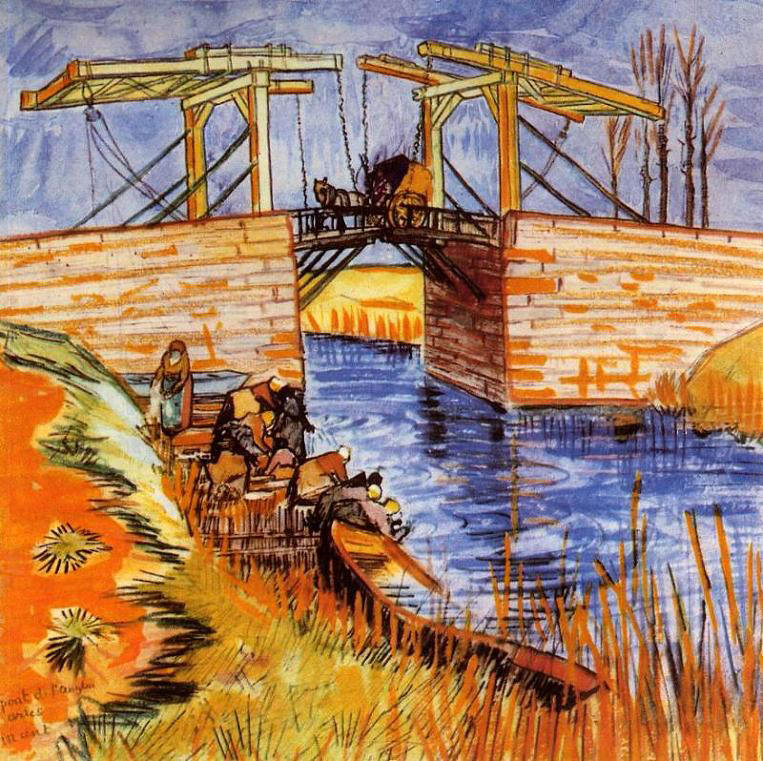
Riproduzioni D'arte Il ponte di Langlois a Arles, 1888 di Vincent Van Gogh (18531890
Bridge of Langlois. On the outskirts of town, the Pont de Réginelle (or Réginal), popularly known as Pont de Langlois, covered the Arles -Bouc canal. The spot attracted Vincent, with its combination of southern light, a Dutch-looking landscape and the oddly shaped bridge, which he thought looked Japanese. He felt compelled to paint it.
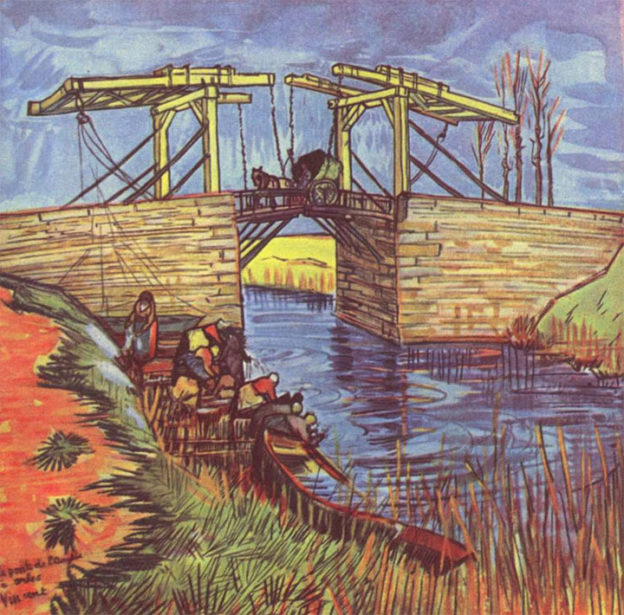
Il ponte di Langlois (opera di Vincent Van Gogh)
Ciao a tutti, video dedicato alla storia dei dipinti del Ponte di Langlois è il nome di una serie di quadri dipinti tra il 1888 e il 1889 da Vincent Van Gogh.
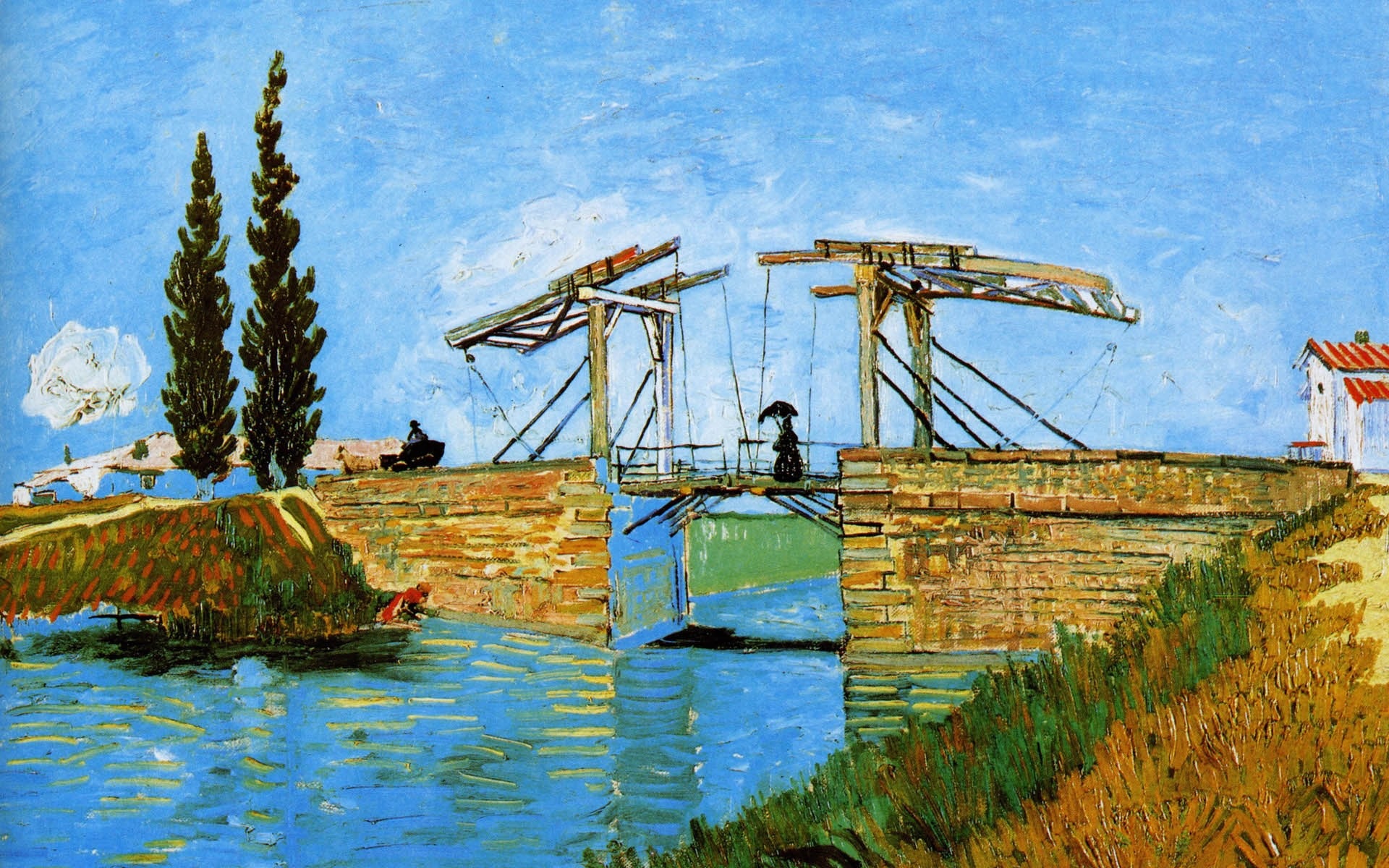
Vincent van Gogh Langlois Bridge at Arles with Women Washing wallpaper art and paintings
Vincent Van Gogh, Il ponte di Langlois, 1888, olio su tela, 49,5 x 64,5 cm. Colonia, Museo Wallraf-Richartz. Questa versione de Il ponte di Langlois fu acquisita dal Museo Wallraf-Richartz nel 1911. Rispetto alle opere di Otterlo e di Amsterdam il punto di vista è opposto. La composizione è frontale e la diagonale della strada è sostituita.
- Programmi Oggi Tv Italia 1
- Classifica Toulouse Football Club Union Sg
- Guardando La Luna Remix Di Quale Canzone
- Fondamenti Di Chimica Generale Pdf
- Quando Esce House Flipper 2
- Che Cos E Il Danno
- Auditorium Parco Della Musica Rome
- La Tv Dei 100 E Uno Casting
- Film E Programmi Tv Di Aidan Gillen
- Ragazza Piu Piccola Al Mondo
